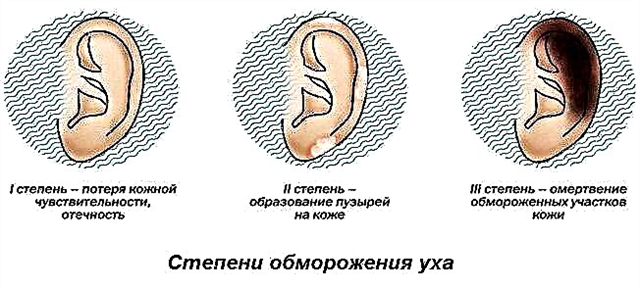Pulse pressure: what does this indicator mean?
 Pulse pressure (PAP) is determined by subtracting the diastolic (lower) reading from the systolic (upper) reading after measuring blood pressure with a conventional tonometer. On average, in a healthy person, this number normally fluctuates in the range of 30-40 millimeters of mercury. Depends on the level of stroke volume of the heart and peripheral vascular resistance.
Pulse pressure (PAP) is determined by subtracting the diastolic (lower) reading from the systolic (upper) reading after measuring blood pressure with a conventional tonometer. On average, in a healthy person, this number normally fluctuates in the range of 30-40 millimeters of mercury. Depends on the level of stroke volume of the heart and peripheral vascular resistance.
As you can see, anyone using a mechanical or electronic tonometer is able to measure their pulse pressure. This is a very informative integral indicator that allows one to draw numerous conclusions about the functioning of the heart and blood vessels. PAD reflects the following characteristics and features:
- the functioning of cardiomyocytes;
- the condition of the blood vessels;
- the volume of the ventricles of the heart;
- the activity of the chamber and aortic valves;
- atherosclerotic or inflammatory changes in the tissues of the heart.
For a better assessment, PAP is measured at rest and after exercise (while it will be slightly higher).
This value is a good marker of latent pathologies, since even with acceptable values of upper and lower pressure, PAP can deviate from the norm. That is why it is very important to constantly monitor this indicator.
Naturally, only a cardiologist can make the correct conclusion, so if you notice an underestimation or increase in this indicator, immediately contact a medical institution.
Norms
The above interval is 30-40 mm. rt. Art. this is a very average value that can vary in individuals, in accordance with their individual genetic characteristics, lifestyle and nutrition. Other important variables on which PAP depends are gender and age. In women it is usually lower, in older people it is higher.
You can see more accurate data in the table of pulse pressure rates by gender and age:
| Age | Normal blood pressure | |||||
|---|---|---|---|---|---|---|
| Men | Women | Men | Women | |||
| Systolic blood pressure | Diastolic blood pressure | Systolic blood pressure | Diastolic blood pressure | Pulse blood pressure | Pulse blood pressure | |
| 20 | 123 | 76 | 116 | 72 | 47 | 44 |
| 30 | 129 | 79 | 120 | 75 | 50 | 45 |
| 40 | 129 | 81 | 127 | 80 | 48 | 47 |
| 50 | 135 | 83 | 135 | 84 | 52 | 51 |
| 60 | 135 | 85 | 135 | 85 | 50 | 50 |
| Over 65 | 135 | 89 | 135 | 89 | 46 | 46 |
Finally, weight also affects the standards for all types of pressure, which can be calculated using the formulas:
- Systolic pressure = 109+ (1/2 * age) + (0.1 * weight);
- Diastolic blood pressure = 63+ (0.1 * age) + (0.15 * weight).
The difference in these indicators will reflect the acceptable pulse pressure for a given age and weight.
What does high pulse pressure mean and how to deal with it?
The causes of high pulse pressure are often physiological. In this case, this indicator rises due to significant physical exertion.
 At the same time, the stroke volume of the left ventricle increases, the level of adrenaline rises, the heart rate increases, and tachycardia occurs. The same happens with psychoemotional overexertion. This happens very often in athletes. This is an absolutely normal situation that passes over time. However, if PD does not recover after 8-10 minutes, there is a reason to suspect the presence of the disease. A similar situation can occur during pregnancy.
At the same time, the stroke volume of the left ventricle increases, the level of adrenaline rises, the heart rate increases, and tachycardia occurs. The same happens with psychoemotional overexertion. This happens very often in athletes. This is an absolutely normal situation that passes over time. However, if PD does not recover after 8-10 minutes, there is a reason to suspect the presence of the disease. A similar situation can occur during pregnancy.
In pathology, an increase in pulse pressure is very characteristic of organic, structural lesions of the heart and blood vessels:
- pathology of the aortic, tricuspid or bicuspid valves (insufficiency);
- other congenital or acquired defects (tetrad of Fallot, non-closure of the botallic duct, ventricular septal defect);
- arteriovenous fistulas;
- heart rhythm disturbances (blockade);
- endocarditis due to infectious diseases;
- rheumatism, systemic lupus erythematosus and other autoimmune pathologies;
- ischemic heart disease, atherosclerosis and their complications:
- involutional (age-related) sclerosis of the arteries;
- hypertonic disease;
- adrenal crisis.
In addition to cardiovascular diseases, pathologies of other organs can also be the cause:
- fever;
- hyperthyroidism;
- Iron-deficiency anemia;
- acute or chronic renal failure;
- increased intracranial pressure.
The predictive value of this number is also important - the higher it is, the greater the likelihood of death due to heart failure. Naturally, this is only one indirect factor on which no definitive conclusions can be drawn.
How to lower the parameter?
First of all, it is necessary to exclude the physiological reasons for this condition. Watch over  yourself - if the pressure rises after physical or psycho-emotional stress, and then quickly returns to normal - there is no cause for concern.
yourself - if the pressure rises after physical or psycho-emotional stress, and then quickly returns to normal - there is no cause for concern.
But if such a pattern is not observed, appropriate measures must be taken. It should be understood that there is no cure for high pulse pressure. It is caused by one reason or another, and it is with it that you need to fight in order to normalize the condition. To diagnose a specific disease, you need to consult a doctor who will conduct an additional examination and prescribe medications in accordance with a particular pathology.
Remember that self-medication may not give any results, or even worsen your health and lead to negative consequences.
Nevertheless, there are general recommendations, the implementation of which can improve the activity of the cardiovascular system, and therefore PAP:
- physical therapy classes - under the supervision of a doctor;
- nutritional correction;
- getting enough sleep and rest;
- rejection of bad habits.
What can you suspect with a reduced indicator and what is the tactic of action in such a case?
A small difference between systolic and diastolic pressure means a deterioration in the pumping function of the heart, a decrease in the stroke volume of the ejection, which leads to hypoxia of organs and tissues. This is why low pulse pressure is often accompanied by the following symptoms:
- dizziness;
- drowsiness;
- weakness;
- headache.
 A one-time deviation with a quick return to normal is not dangerous, however, a systematic decrease in PD may indicate the presence of the following diseases:
A one-time deviation with a quick return to normal is not dangerous, however, a systematic decrease in PD may indicate the presence of the following diseases:
- vegetative-vascular dystonia (VVD);
- myocarditis;
- stenosis of the heart or vascular valves;
- coarctation of the aorta
- shock of various origins (hypovolemic, cardiogenic);
- cardiosclerosis;
- violation of the blood supply to the kidneys;
- myocardial hypertrophy.
What to do?
As in the previous case, it is critical to determine the exact cause of the decrease in PD. It is necessary to undergo a detailed examination, including laboratory tests, electrocardiography, ultrasound and other methods.
Already, depending on the specific disease, the cardiologist will prescribe certain drugs or, if necessary, surgical methods of treatment. Decreased PAP is considered a significant indicator of heart failure, which requires the most serious attitude towards it.
Conclusions
 Pulse blood pressure is considered an important indicator of the condition of the heart and blood vessels, and is normally around 30-50 Hg, but it can vary depending on gender, age and weight. This indicator reflects such essential characteristics as the ratio of pumping function and peripheral resistance of large arteries.
Pulse blood pressure is considered an important indicator of the condition of the heart and blood vessels, and is normally around 30-50 Hg, but it can vary depending on gender, age and weight. This indicator reflects such essential characteristics as the ratio of pumping function and peripheral resistance of large arteries.
Both an increase and a decrease indicate the presence of pathology, even with normal numbers of diastolic or systolic pressure. If such deviations are found, you should immediately contact a specialist for an additional examination and establish an accurate diagnosis.



